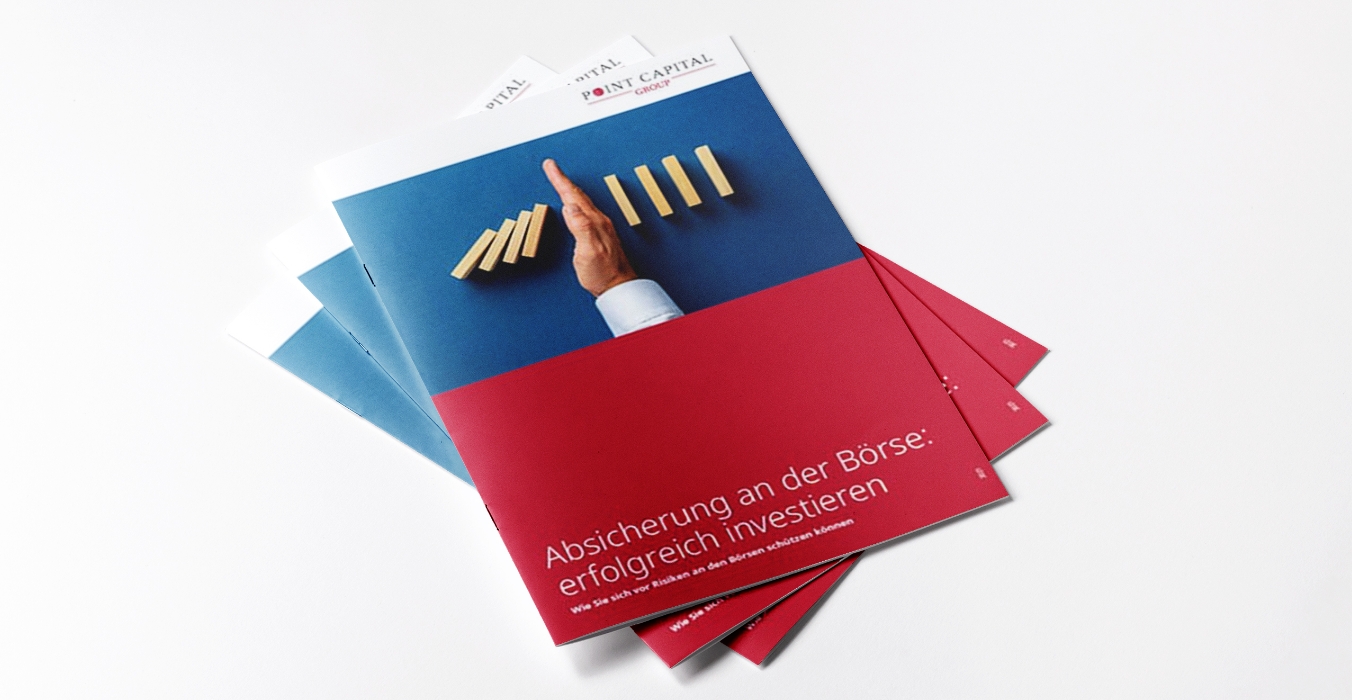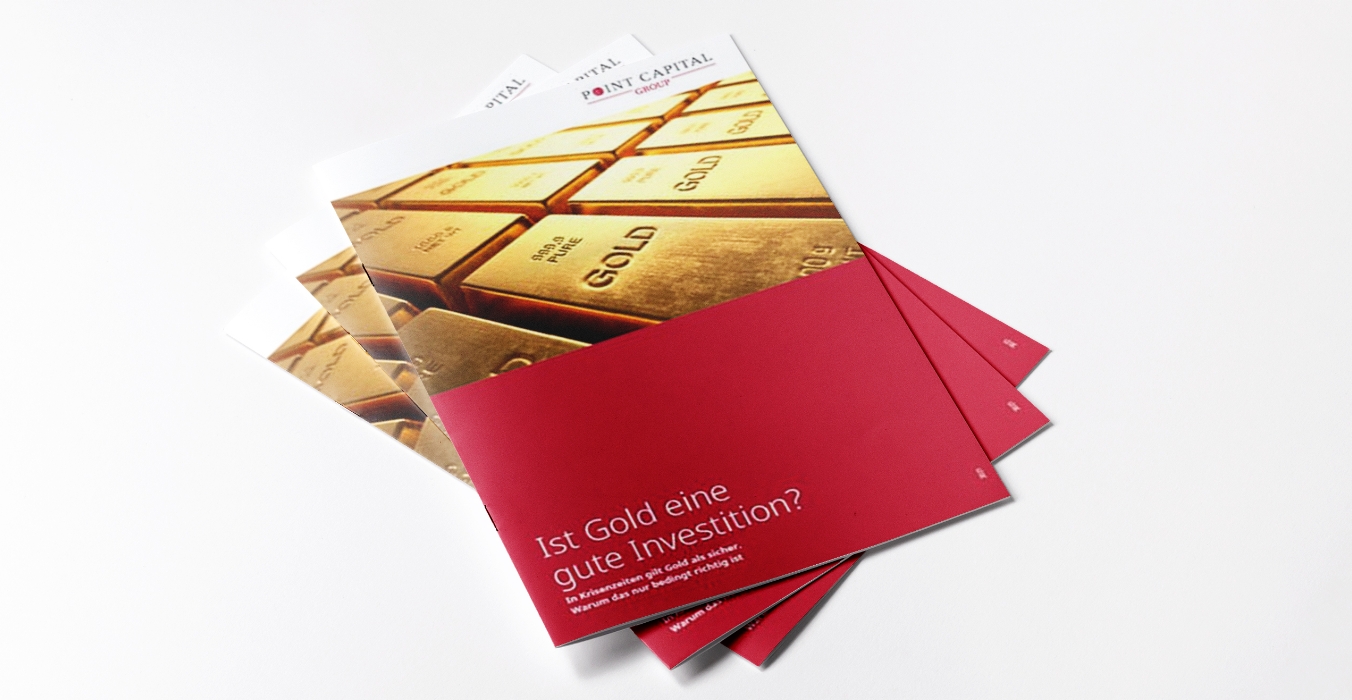Our guides
Our guides tell you everything you need to know about investing in shares, bonds, gold and real estate. What you need to know about the stock markets and risk hedging, interest rates and inflation to avoid typical investor mistakes. Always well informed with Point Capital – know more, make better decisions!
Download guide
1. hedging on the stock market: investing successfully
2. gold as an investment - security or deceptive stability?
3. equity investment: the right strategy for attractive returns
4 Which investment is the best?
5. the most common mistakes when investing in shares
6. momentum - with this investment strategy you bet on winners

Hedging on the stock market:<br>Investing successfully
Many investors initially associate the stock market with uncertainty and risk. With the right approach, market risks on the stock market can be greatly reduced. Our guide shows you how to protect your capital and optimally diversify your investment portfolio. Download our free guide now and find out what well thought-out risk management means for your investment strategy.

Gold as an investment:<br>Security or deceptive stability?
Gold has been regarded as a stable asset for centuries and is considered a safe investment, especially in times of crisis. But how safe is gold really? An in-depth analysis shows that this is only partially true due to its volatility and lack of earning power. Gain valuable insights into the gold price trend and check whether gold is a suitable investment for your portfolio.

Equity investment: the right strategy for attractive returns
A successful equity investment is based on a clear strategy that makes targeted use of market opportunities. As part of our asset management, we at Point Capital rely on proven investment strategies that are individually tailored to your needs. Take advantage of the potential of a well thought-out investment strategy and find out now about the most important investment principles for equities.

Which investment is the best?
There is a wide choice of investment forms – from shares and real estate to bonds and commodities. Each of these investment options offers specific opportunities, but also individual risks. The key question for investors is: which strategy is best suited to your goals and risk appetite? In this guide, we compare the various asset classes and show which investment is the most successful.

The most common mistakes when investing in shares
Mistakes are part of investing – but not every mistake has to be made from personal experience. With the right knowledge and a sound strategy from Point Capital, you can avoid typical pitfalls and emotional reactions that can jeopardize your assets in the long term. Learn how to make smart investment decisions and successfully align your portfolio for the long term.

Momentum - with this investment strategy you are betting on winners
A momentum strategy identifies and utilizes existing trends on the stock market. It helps to focus on winners and avoid losers. Download the free guide now and find out more about successful wealth accumulation with a momentum strategy.

50 tips for your financial health - even in retirement
A carefree retirement starts with good preparation. If you plan early, you can minimize financial risks and make the most of opportunities. Our guide gives you 50 practical tips on how to secure your assets, manage them wisely and make targeted provisions for the future. Download the guide now free of charge and discover how easy financial health can be in old age.
Wealth accumulation is the systematic process of creating financial reserves and value.
To do this, you regularly invest money, e.g. in shares, bonds, gold or real estate. The aim is to increase your capital over time for financial security and/or retirement provision.
Good assets secure your financial independence and cover emergencies, retirement provision and major wishes. What is considered “good” depends on your individual standard of living, age and income. Three to five times your annual net income is often considered a solid basis. The earlier you start, the easier it is to achieve this goal.
You should invest at least 10 to 20 % of your assets. It is important to build up a sufficient liquidity buffer beforehand – ideally three to six months’ expenditure. This means that you don’t have to access the invested capital directly in the event of unexpected expenses. The investment then really serves to build up assets and not as a nest egg.
Building up assets, e.g. with the help of asset management, creates financial freedom, protects against crises and secures your standard of living in the long term. With solid assets, you are less dependent on salary, pension gaps or state benefits. You actively shape your future in a self-determined way.
Investment means using capital in a targeted manner in order to preserve or increase it over time. In contrast to pure saving, asset investment pursues effective long-term wealth accumulation. By investing in shares, bonds, gold or real estate, an attractive return is achieved in the long term – taking into account the corresponding risks. The decisive factor here is not the product, but the quality and structure of the overall portfolio.
Invest in valuable, well-analyzed securities that fit your personal strategy. A structured approach that takes into account your need for security, your stage in life and your objectives is important. Instead of trend products or standard solutions, you need individual, responsibly managed investment solutions.
There is no such thing as an absolutely crisis-proof investment – every investment has certain risks.
However, tangible assets such as gold, real estate or short-term government bonds from economically stable countries are considered comparatively stable.
Even more important than a single “safe” investment is broad diversification in order to spread the risk across different asset classes.
The best way to invest your money is with a clear strategy, regular monitoring and professional support. A well thought-out asset structure with asset values tailored to your goals is the basis for this. If you invest selectively, you are speculating – but if you invest strategically, you are building up long-term assets.
The best tangible assets are characterized by value retention, inflation protection and long-term stability. These include investments in solid companies, real estate or selected commodities – provided they are part of a structured portfolio. It is not the individual tangible asset that is important, but its function in the overall concept of your investment.